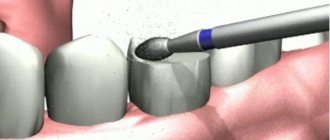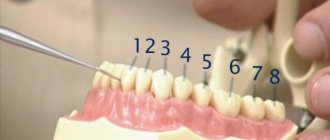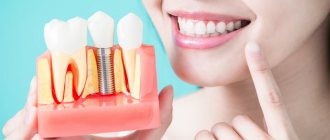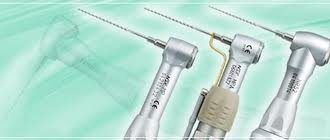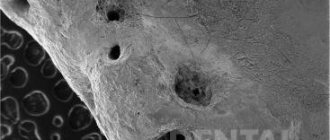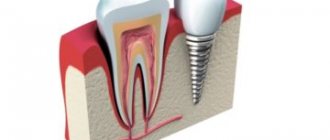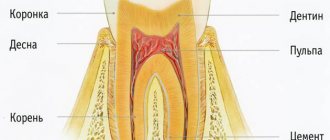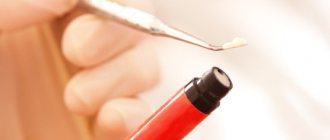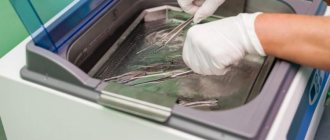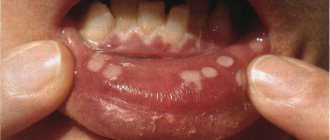Not only hygiene, but also preventive procedures are extremely important in dental care.
Grinding followed by polishing removes tartar and plaque. This prevents the formation of caries and inflammatory processes in the oral cavity.
Teeth become much whiter. A “Hollywood smile” means not only implants and ceramic crowns, but also healthy, beautiful natural teeth.
A toothbrush cannot fully clean your mouth. Grinding is used for deep cleaning of the surface layer, supragingival and subgingival areas, and interdental crevices.
Purpose of the event
In addition to prevention, grinding is extremely important in dental treatment.
The dentist may recommend the procedure in the following cases:
- during surgery . Dental plaque and tartar contain unfavorable bacterial flora. To clean the oral cavity, grinding is carried out;
- in therapy . The color of the surface of tooth enamel changes due to plaque. In order to select the correct color scheme for the filling material, grinding is done first. It is also needed to level the surface of the filling after the cement has hardened;
- for hygienic effect . By cleaning the surface of the teeth, we remove stagnant microflora from the oral cavity;
- for aesthetic reasons . Beautiful light teeth make a smile more attractive;
- during prosthetics . The doctor must choose the right color so that it does not differ from the natural color, so it is better to clean it;
- when wearing and removing braces to remove plaque.
It is recommended to carry out the procedure once or twice a year, depending on the condition of the teeth and enamel.
Why do you need to polish your teeth after brushing?
Tartar and bacterial deposits cannot be removed with a regular toothbrush. For this purpose, professional methods are used - laser, ultrasonic cleaning or Air Flow.
But if you simply remove plaque, the tooth surface will remain rough. Like sticky tape, it will begin to attract food particles along with saliva.
This will lead to even faster formation of dental plaque and crystallization of stone deposits. To prevent this from happening, be sure to carry out grinding.
The procedure performs 2 tasks at once:
- Aesthetic – teeth are smooth, even, with a beautiful shine.
- Hygienic – protection against the accumulation of pathogenic bacteria.
Polishing is also done after caries treatment. This is necessary in order to “adjust” the filling to the bite, level its surface and smooth the boundary between the enamel and the filling material.
Tartar
Contraindications
There are contraindications for the procedure. Before cleaning, you must agree with your dentist.
Not recommended:
- In case of allergic reactions to components of substances used in grinding.
- For kidney diseases, when one of the elements of therapy is a salt-free diet.
- When there are ulcers or inflammation of the mucous membrane in the oral cavity.
- For acute viral infections.
- Periodontitis.
- In the case when several teeth are affected by caries.
- For bleeding and inflamed gums.
- In case of fragile and thin tooth enamel.
You must first eliminate the cause of the contraindications, and then carry out cleaning.
Features of the Zoom teeth whitening technique, reviews from patients and specialists. See photos of Clarity Advanced braces here.
At this address https://dr-zubov.ru/krasota-i-uxod/preparaty-i-produkty/vrednye-dlya-emali-chto-ogranichit-i-chto-isklyuchit-iz-raciona.html we offer detailed information about products that destroy teeth.
Stages of implementation
The procedure for grinding teeth after their restoration involves performing certain stages.
These include:
- Checking and correcting tooth shape, which is responsible for the symmetry of proportions and integration with the rest of the hard tissues of the oral cavity, is a necessary procedure.
It provides the opportunity to outline the contour of the embrasures on the cutting edge. At this stage, medium-grit discs and burs coated with fine diamond particles are used.At the end of the first stage of teeth grinding, the vestibular contour is checked or corrected.
- Polishing. The second stage involves improving the macrostructure and polishing the proximal surfaces.
If necessary, remove excess amount of composite material from the cervical area. For interproximal polishing, strips of medium or fine roughness are used. - Processing of fillings. After detailing the contour, volume, and shape of the restored tooth, the surface of the filling is treated with heads or rubber disks to smooth it.
- Refinement of macrotexture. The next stage of teeth grinding involves thinning the macrotexture of the filling in the horizontal and vertical plane. To smooth the surface, burs are used, and then rubber nozzles are used.
- Restoring the brightness and shine level of a natural tooth refers to the final stage of grinding.
For these purposes, soft brushes, discs, diamond pastes with abrasive particle sizes less than 0.5 microns, or polishing agents based on aluminum oxide are intended.
The classical technology of grinding the tooth surface provides for a certain sequence of using abrasive pastes.
First, a coarse-grained product is used, then a medium-grained composition. Fine-grained pastes are intended for the final stage. The degree of abrasiveness varies from 40 to 250 units.
Methods and their advantages
There are several grinding methods. A dozen years ago, the operation was performed using dental instruments and a drill. This caused some discomfort.
Modern methods are so gentle and painless that some patients manage to take a nap for 30-40 minutes.
Traditional
The main tools for removing soft and hard plaque using chipping and cutting are: scaler, curette, chisel, rasp, hoe and others.
Using special attachments for a drill, the surface is polished.
Ultrasonic
One of the most common and accessible methods. Almost all dental offices are equipped with ultrasonic scalers.
The basic principle of operation is the use of ultrasound of various frequencies. Ultrasound destroys plaque tissue. Special attachments are used for different surfaces and hard-to-reach places.
The advantage of this technique is that it prevents inflammatory processes and has a detrimental effect on bacteria. Compared to a dental drill, there is no unpleasant vibration or sound, and the patient feels more comfortable.
Air (sandblasting)
Air polishing uses a pressurized stream of air containing an abrasive material. Finely dispersed abrasive particles gently polish surfaces without touching the gums.
Perio- flow and Air cleaning , which differ in the composition of abrasive fillers. The procedure is so painless and effective that some clients even strive to perform it more often, contrary to recommendations.
Laser
Lasers began to be used not so long ago; it can be argued that this is a relatively new technique. Sufficiently highly qualified specialists are needed. Although laser equipment has become portable, it is still expensive.
Argon lasers are mainly used in dental clinics. High-precision equipment quickly and accurately cuts the stone and cleans the surface.
POLISHING PASTES
Polishing pastes in dentistry are used for enamel and for filling materials.
Polishing is what ends any procedure for installing a dental filling, because plaque adheres to smooth, polished teeth much less actively than to rough surfaces. In this case, the dentist polishes not only the filling itself, but also grinds its edges to give uniformity to the boundaries of the tooth and filling. In the case where the edges of the filling hang over the tooth, there is a possibility of food debris getting into the voids and, as you understand, this will not lead to anything good. Polishing of fillings is also done to eliminate possible discomfort, because roughness will be more noticeable for the oral mucosa, which is sensitive to any foreign bodies.
Polishing teeth with pastes is an integral part of professional teeth cleaning. They contain abrasives that effectively remove dense plaque, and during the polishing process large particles break up into small ones. This is harmless to the enamel.
Polishing pastes for fillings
CleanPolish – Kerr – CleanPolish 50g (360)
Paste for pre-polishing fillings made of gold, amalgam and composites, as well as for cleaning and polishing teeth
SuperPolish – Kerr – SuperPolish 45gr (361)
Paste for obtaining a mirror shine. Gives gold fillings, composite and amalgam fillings an extraordinary shine.
PolishPast D - Preliminary - Omega-Dent
Indications. Polishing paste for preliminary grinding and polishing of the surface of fillings made of light- and chemical-curing composite materials. Ingredients: diamond abrasive, water-soluble polymer base, silicone additives, stabilizer, fragrance Properties. The operating principle of “PolishPaste – D – Preliminary” is based on the specific abrasive properties of fine diamond powder. Thanks to these properties, diamond abrasive grinds and pre-polishes the formed filling made of composite materials
PolishPaste D - Dry shine - Omega-Dent
Indications. Polishing paste for final polishing of the surface of fillings made of light- and chemical-curing composite materials to a dry shine. Ingredients: diamond abrasive, water-soluble polymer base, silicone additives, stabilizer, fragrance Properties. The operating principle of "PolishPaste - D - Dry Shine" is based on the specific abrasive properties of fine diamond powder. Thanks to these properties, diamond abrasive produces final polishing of the formed composite filling to a dry shine.
PolishPast D – Finish – Omega-Dent
Indications. Polishing paste for final polishing of the surface of fillings made of light- and chemical-curing composite materials. Ingredients: diamond abrasive, water-soluble polymer base, silicone additives, stabilizer, fragrance Properties. The operating principle of "PolishPast - D - Finish" is based on the specific abrasive properties of fine diamond powder. Thanks to these properties, diamond abrasive produces the final polishing of the formed filling made of composite materials.
Polyrene No. 3 - paste for final processing of fillings made of composite and glass ionomer materials
INDICATIONS FOR USE
— filling fillings made of composite and glass ionomer materials
ADVANTAGES
— high-quality processing of fillings — ease of use — convenient application — excellent washability with water — “dry” shine effect
RELEASE FORM
can - 45g
Teeth polishing paste
Detartrine - Septodont - Detartrine
Paste for removing tartar Cleansing paste for scaling Composition (per 100 g): Silicone 55 g. Filler up to 100 g.
Properties: Detartrine is a paste with a pleasant taste, has excellent cleaning properties, allowing for high-quality polishing of the tooth surface after scaling, as well as removing soft plaque. The oils present in Detartrine provide excellent taste and patient comfort.
Indications: Final treatment of the tooth after scaling. Removal of smoker's pigmented plaque Final polishing of fillings.
Contraindications: Allergic reaction to paraformaldehyde.
Directions for use: Take the required amount of paste with a spatula, apply it to a circular brush, and polish the surface.
Attention! Rinse off the paste thoroughly after polishing.
Release form: Packaging 45 g
Detartrine Z - Septodont - Detartrine
Composition Silicon dioxide………………………………………43.44 g Ground zirconium silicate……………………….13.50 g 35% formaldehyde solution…………… ………………….0.10 g Filler in sufficient quantity for………..100 g
Properties DETARTHRIN Z is a pink paste with a very pleasant smell. DETARTHRIN Z has an abrasive effect specific to dentistry, thanks to the zircon granules included in the preparation. Under a microscope, these granules are visible in the form of flat scrapers, which are separated from each other, forming a cutting edge of great strength. When this powder is rubbed over a rough surface, the cutting edge of the granules eliminates the roughness. It is this property of crushed zirconium that helps DETARTHRIN Z paste remove dental plaque without damaging the enamel. The essential oils contained in the paste give a feeling of freshness, which is greatly appreciated by patients. In addition, essential oils have a slight embalming effect. Therefore, gum irritation that may occur as a result of mechanical removal of dental plaque is minimal.
Indications • Finishing treatment after removal of dental plaque. • Removing tobacco and food stains. • Polishing of fillings.
Method of use: Take the required amount of paste on a spatula and lubricate the circular brush with it.
Warnings Risk of allergy to formaldehyde.
PolishPast Z – Omega-Dent – zirconium
Indications: - removal of tartar by mechanical means; — final polishing of fillings made of chemical and light-curing composite materials. Ingredients: fine abrasive, binding components, filler, fragrance, silicone additives Properties. The operating principle of "PolishPast - Z" is based on the specific abrasive properties of fine abrasive. Thanks to these properties, “PolishPaste - Z” removes tartar without damaging the enamel. In addition, during the final polishing of fillings, fine abrasive gives them shine.
PolishPaste Z+F – Omega-Dent – zirconium + fluorine
Indications. Removing soft plaque mechanically; final polishing of enamel after removing tartar; fluoridation of tooth enamel; antiseptic treatment of enamel. Ingredients: fine abrasive, binders, fluorine-containing components, filler, flavor, silicone additives. Properties. The operating principle of "PolishPast - Z+F" is based on the specific abrasive properties of fine abrasive with the addition of fluoridating components. Thanks to these properties, “PolishPaste - Z+F” removes soft plaque without damaging the enamel. In addition, during the final polishing of the enamel after removing tartar, especially on teeth affected by periodontal disease, it is very important, by polishing the surface, to eliminate all kinds of irregularities and cracks, which prevents new formations of tartar.
PolishPaste Z+W – Omega-Dent – zirconium + carbamide peroxide
Indications: final polishing and whitening of enamel after removing tartar; removal of soft dental plaque mechanically; fluoridation of tooth enamel. Ingredients: fine abrasive, binders, titanium dioxide, carbamide peroxide, filler, flavor. Properties. The operating principle of "PolishPaste - Z+W" is based on the specific abrasive properties of fine abrasive and the bleaching properties of carbamide peroxide. The combination of aminofluoride with potassium nitrate helps saturate the enamel with fluoride ions and relieve enamel sensitivity. Thanks to these properties, “PolishPaste - Z+W” removes soft plaque without damaging the enamel and produces whitening, which is very important when imparting high aesthetic properties.
Polyrene No. 2 - paste for treating enamel before restoration
INDICATIONS FOR USE
treatment of enamel before restoration or teeth whitening, before sealing fissures to remove soft plaque for the prevention of caries
ADVANTAGES
Effective cleaning of enamel High-quality removal of soft plaque and pellicles in hard-to-reach places and fissures Reliable prevention of caries (professional cleaning) Convenient spot application Easy to use Easily washed off with a water-air jet Pleasant refreshing taste
RELEASE FORM
jar 45 g
Polyrene No. 1 - paste for softening and removing tartar without damaging the enamel
INDICATIONS FOR USE
— softening and removal of tartar without damaging the enamel.
ADVANTAGES
— quick softening and removal of tartar — convenient spot application — easily washed off with a water-air jet — pleasant refreshing taste
RELEASE FORM
jar 45 g
Tools and materials
As additional tools for hardware cleaning, various types of attachments are used for different areas and surfaces.
For traditional mechanical impact on stones and plaque, use:
- hard-to-reach areas between the teeth were cleaned with pins. Flat small abrasive discs;
- cone-shaped attachments (brushes) for uneven surfaces with tubercles;
- flat parts are cleaned with rubber cups. The combination used an ultrasound machine;
- sanding strips for fillings and narrow, hard-to-reach surfaces.
Special pastes are used for grinding and polishing. They contain different abrasive compositions. Depending on the purpose, the dentist uses them alternately.
They are marked with a special index according to the degree of grain: from coarse-grained 250 (blue) to soft polishing 40 (yellow). Pastes are produced by different manufacturers, but use a standard classification. Start grinding with coarse-grained compounds.
Chemicals for removing dental plaque
Chemical plaque removers have been widely used since the beginning of the last century.
They used sulfuric acid, and later hydrochloric, nitric, trichloroacetic, lactic acid, ammonium fluoride, and fluoroglucinic sulfuric acid. Due to the possible harmful effects on hard dental tissues, the acid method of dissolving mineralized dental plaque is not widely used. However, even now, a number of chemicals, mainly acids, are used to soften tightly fixed mineralized dental deposits before their final removal, especially on mobile teeth. Iodine is often added to such compositions to simultaneously stain tartar and provide an antiseptic effect. Depuration Solution (Products Dentaires, Switzerland) contains hydrochloric acid (20%), iodine (0.5%), chloroform (20%). Detartrol ultra (Septodont) includes concentrated hydrochloric acid (20%), iodine (0.75%), chloroform (20%). The softening gel produced by VladMiV (Russia) is made on the basis of natural polysaccharide and also contains acids. To soften dental plaque, compositions were also proposed that included 3H hydrochloric acid (1.7), a saturated solution of hydroquinone (10), ascorbic acid (0.1) (D. G. Myaskovsky, 1978), trichloroacetic acid and 50% lactic acid.
The preparations are applied to the surface of mineralized dental plaque for 30-60 seconds. (sometimes for a longer time), after which they are washed off, and the tartar is removed using conventional methods.
Stages
The grinding process includes several stages. The dentist's work progresses faster if he is assisted by an assistant.
Preparatory
Since the entire process takes an average of 30 to 40 minutes, it is difficult for the patient to keep his mouth open. Plastic mouth dilators or polymer retractors are used.
When a separate area is treated, a rubber dam is used, a plate that separates the teeth from each other. Alternatively, a protective resin can be used. To avoid touching the soft tissues of the lips, cotton swabs are placed.
Waste materials and water are sucked out using a special tube. Plastic glasses protect the patient from splashes and suspended particles.
What is dental caries and how to eliminate it. Come here if you are interested in prosthetics on implants in the absence of teeth.
Follow the link https://dr-zubov.ru/ortopediya/uxod-o/prokladki-dlya-protezov-sovremennye-sredstva-v-dostizhenii-komforta.html if you are interested in the action and effectiveness of retaining spacers for dentures.
Grinding
For cleaning in the traditional way, local anesthesia can be used, preferably in the form of pastes. This will neutralize the unpleasant effect of the drill. Other techniques are more comfortable and painless, and therefore do not require protection from the stress effect.
Consistently, the doctor destroys the initially large stones, treats supragingival and subgingival deposits, hard-to-reach places, and uneven surfaces.
The specialist then grinds the flat surfaces of the tooth. The process uses various attachments and abrasive pastes. Saliva, water and waste materials are constantly sucked out.
After grinding is completed, the oral cavity is disinfected. Move on to the next stage.
Polishing
After grinding, the surface of the teeth is somewhat rough. If you leave it in this form, then conditions are created for the fixation of small parts of food and the formation of new deposits.
To eliminate this defect, teeth are polished with fine abrasive compounds applied to special brushes.
The procedure is carried out as carefully and sparingly as possible, but it is still stressful for the teeth and enamel. To restore the enamel, the next stage is carried out.
The video provides information about teeth polishing tools.
Applying paste
In order to protect and restore the enamel layer, they are coated with special pastes. The pastes contain minerals that restore enamel.
Precautionary measures
It is recommended to refrain from eating for 2 hours. In the first two days you need to adhere to a gentle regimen. Eat less foods containing natural dyes, highly chilled and hot foods.
The sensitivity threshold of the teeth may be increased for some time, but after two weeks, as a rule, everything returns to normal.
Tools for polishing the surface of teeth
Polishing the surface of teeth
It is usually performed after removing dental plaque to ensure a smooth surface that prevents plaque retention. Polishing also permanently removes small fragments of mineralized dental plaque and stains on the teeth. The disadvantage of most types of enamel surface polishing is the complete or partial removal of its surface layer, enriched with fluorides. Therefore, it is advisable to treat the polished surface with fluorine-containing solutions.
For polishing, special rotating rubber cups (caps) and end brushes, polishing strips, and flosses can be used.
Soft rubber polishing caps can be completely hollow or with projections (ribs; Fig. 126, A), bridges (Fig. 126, B) or reverse spiral projections on the inner (Fig. 126, B) or outer (Fig. 126, D) surfaces. There are cups with a miniature nylon brush mounted inside (Fig. 126, E). In Fig. 127 different types of polishing cups
(caps).
The caps are fixed in the contra-angle handpiece, filled with polishing paste and polished smooth, sometimes occlusal, surfaces of the teeth at a rotation speed of 2000-5000 rpm (Fig. 128). The cups can be equipped with protective shields to prevent paste from entering the tip head. Cup-to-handpiece fixation systems
can be conventional (for caps equipped with a standard shank for a contra-angle tip, Fig. 129, A) or provide for fixation through special holders (threaded mandrels, Fig. 129, B, or with a disk, Fig. 129, C). Cups can be of different hardness. Thus, soft caps from Densco are blue, medium-hard caps are white, and hard caps are yellow. Edenta's blue superfine preventive polishers can be used without paste at a rotation speed of 5000 rpm, white cups for pastes at 2000 rpm.
For polishing chewing surfaces, it is convenient to use rotating brushes with polishing paste. Brushes can also be used on smooth surfaces that have stains.
To clean the interdental spaces,
thin, flexible, flat-shaped EVA polishing heads
made of wood or plastic are used. When using the EVA system, the interdental spaces are cleaned due to vibrating longitudinal vibrations, which are transmitted to the working part (Fig. 130). Another method for removing plaque from the proximal surfaces of teeth is to use aluminum oxide-coated polishing strips, also used for polishing composite fillings. Flat dental floss or strips of polishing paste, as well as rubber polishing cones for the dental handpiece, can also be used for this purpose.
For cleaning and polishing tooth surfaces, the S.E.T. company proposed the S.E.T.-Prophy-Leader tip - a special tip that provides up-down vertical movement and rotation up to 180° clockwise and counterclockwise (2500 movements per minute; Fig. 132). Special tools (green and brown polishers, brushes) with a curved shank have been developed for the tip.
Safety
In the process of chewing food, our teeth face much more stress and negative influences than during brushing. Hard and soft plaque accumulated in the oral cavity provokes an unpleasant odor and creates an environment for pathogenic flora.
Foci of infection arise where conditions are created for this. Therefore, grinding your teeth not only makes your mouth cleaner, but also blocks the growth of bacteria.
Plus, healthy white teeth are beautiful. The enamel layer not only is not destroyed, but, on the contrary, is cleaned and restored.
Contraindications for grinding
The selective grinding technique also has contraindications:
- Severe inflammatory process of periodontal tissues. This is a relative contraindication. Before grinding, anti-inflammatory therapy is carried out, dental plaque is removed, and foci of the infectious process are eliminated. After this, sanding is performed.
- TMJ pathologies of acute and chronic course, which are accompanied by dysfunction and pain. In this case, grinding can be performed only during the period of subsidence of symptoms, during remission.
- Severe deformations and anomalies of the dental system, when surgical, orthodontic or complex treatment is required.
Prices
The cost of the service depends on dentistry and its level and equipment. It is important which treatment method is chosen. Prices are indicated in the number of units or the entire oral cavity. The best option is to brush all your teeth.
On average, the price per unit ranges from 100 to 200 rubles. Many dental clinics offer installment plans. When filling teeth, grinding is included in the general price list, unlike polishing.
Materials play an important role. As a rule, expensive clinics use higher quality ones. This point should be reflected in the price list, where the manufacturer is indicated. Find out what alternative pricing option they can offer you.
Watch the video for the process of polishing seams on teeth.
Sequence
Grinding of the tooth surface is most often done using classical technology .
The traditional approach involves the use of a drill and special pastes with a granular structure. The dentist has a number of special instruments, as well as ultrasonic attachments and drill tips.
Pastes are used in a certain sequence - from higher to lower grain levels:
- first, a coarse paste is applied, with which the dentist cleans off the largest fragments;
- further – medium-grained;
- at the final stage, a fine-grained composition is used, which removes the smallest particles of abrasive material.
This contributes to the most adequate smoothing of irregularities. This method is relevant for correcting the shape of a tooth.
For the purpose of grinding enamel, other sets of auxiliary materials are also used. For example, fine-grained burs are used, as well as corundum heads.
The dentist also resorts to using a set of special heads, strips and discs during the subsequent stage - polishing. Specialized paste-like compositions are used. At the end of the procedure, fluoride preparations are used.
The process is not inherently complicated: a special composition is applied and the surface is processed using a tool (brush, cap, tip, etc.).
Traditional grinding is gradually being replaced by the technology of using air masses for the same purpose. The equipment is built on the principle of functioning of a mini-sandblasting tool for grinding.
The result of the impact is the removal and removal of tissues that have become a “victim” of the reaction with abrasive particles.
Professionals note that air grinding has a number of advantages over classical grinding:
- It is devoid of all the physical disadvantages of the drill, which cause discomfort for the patient and partly for the dentist himself: temperature, pressure, noise and vibration do not accompany this procedure.
- There is no need to inject large amounts of anesthesia. Local impacts are possible.
- Less risk of damage to tissue and tooth enamel.
- The procedure is faster and requires less effort on the part of the doctor.
Thus, air grinding is a progressive method in dentistry. However, the option of partially exaggerating the positive features of the method for advertising purposes cannot be ruled out.
Already today, opponents of this approach note a number of disadvantages, for example, a significant increase in the sensitivity of the enamel after the procedure, the impossibility of use in deep cavities reaching the level of the pulp.
Also, only composite material is susceptible to the influence of air, while compositions using silver cannot be adjusted in this way.
For another type of tooth enamel grinding – stripping, watch the video:
